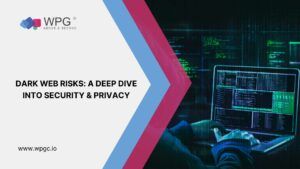
You may have heard scary stories about the “dark web” enabling illegal activity. But much remains misunderstood. This article explains what the dark web is and its realistic impacts. It also explains how to protect your data.
Table of Contents
The internet has different layers. The everyday visible sites and apps you freely use make up the “surface web”. Then there’s the “deep web” holding private data like medical records behind logins.
The “dark web” refers specifically to anonymous websites and activities. It uses special security and access.
This encrypted corner allows invisible communications and transactions. Both legal and illegal activities can happen away from public visibility and authorities. Some call it the internet’s “underbelly”.
Unfortunately, some dark web users obtain private information illegally. They then share or sell it without consent. Prime targets for theft include:
Careless digital hygiene allows bits of your identity and activity to end up archived on the dark web. And connected fragments paint ominously complete profiles.
The dark web covers several dangerous cybersecurity threats. These include direct data theft and exposure.
Ransomware Gangs: Developers collaborate in hidden forums to build malicious software. The software seizes control of victims’ computer systems until ransom gets paid. The same anonymity protections then allow collecting payments through untraceable cryptocurrency channels. This protects the location of the payer.
Phishing Kits: Criminals list fake login portals for popular banking, email, and social media sites. They sell them. They’re ready to trick unsuspecting visitors into surrendering account details. Later, they abuse the details.
Malware Markets: Dark web stores and auctions sell advanced hacking tools. They also sell data stealing software code and system penetration techniques. This circulates powerful new attack vectors known to vendors but not defenses.
Drugs, Weapons and Worse: Worst of all, real-world contraband like narcotics, firearms, and stolen goods find black market trade here too. They are unlawfully obtained or produced. Where legal guidelines slip, harm gets enabled.
All these malevolent actors collaborate in hidden forums to advance global threats. They also avoid authorities.
Clearly the unchecked dark web allows many shady schemes. But privacy-protecting coins like Monero or Zcash also have legal financial uses. They protect civil liberties. Additionally, threat researchers, journalists, and investigators may access it legally. They do so purely to uncover fraud or crime trends.
If you have a validated purpose, take precautions:
Overall, balance ethical duty versus safety pragmatism if needing evidence from these parts. Most threat hunting goals find achievable alternatives on the public web.
No solution fully blocks the dark web. However, smarter personal and enterprise digital habits substantially limit identity theft or malware exposure threats.
The hidden internet shifts aspects of cybercrime threats. Following foundational safe computing practices largely protects against turbulence. And understanding truths separates from hyped media myths.
The dark web enables crimes best avoided. It also provides cover for legal rights, such as anonymity tools. Regardless of threat origins, cybersecurity dangers demand properly securing devices and accounts. Balance privacy with pragmatic precaution. Avoid unnecessary risks and periodically check your digital footprint.
Unusual account login attempts, password reset notices, or suspicious transactions you didn’t authorize often mean your credentials leaked. Assume scam risk. Notify institutions, freeze credit reports initially until resolved.
Simply visiting legal sites on the dark web would not break most countries’ laws. However, standards vary internationally regarding tools used. Casual entry lacks technical justification when safer options exist on the surface web.
Truly wiping records traded by data brokers is extremely difficult. It’s also hard to remove records cached by search engines or archived on blogs. Adopting good privacy practices day-to-day at least limits further unintended spread and exposure.
Managing IT infrastructure in-house is more challenging than ever. With rising costs, evolving…
Managing IT in-house isn’t easy. The costs pile up, skilled professionals are hard…
When it comes to IT support, businesses generally face a choice between two distinct…
As your business grows, so does the complexity of your IT needs. Managing…
Technology is the backbone of modern business operations. However, when IT systems fail,…
In today’s fast-paced business environment, technology issues can bring your operations to a grinding…